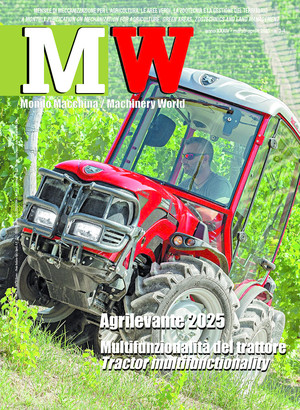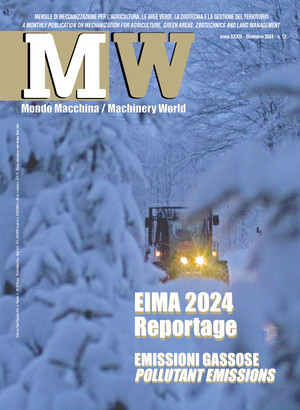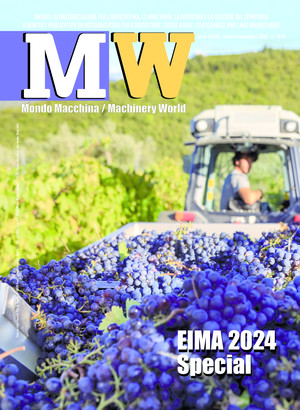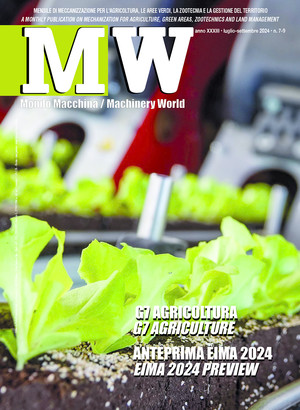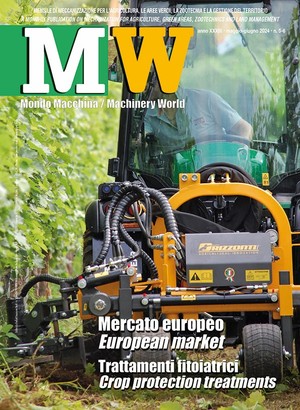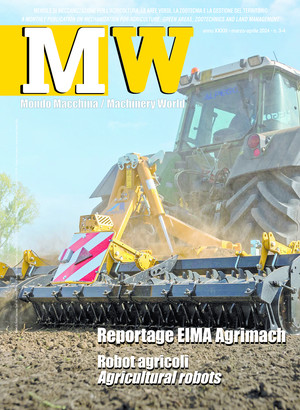
Strip-tillage, a technique for precision seeding
This practice has several advantages over tillage and direct seeding. It safeguards the soil's physical and chemical characteristics and water content. Strip-tillage improves crop quality and its economic and environmental sustainability
Among the different options in conservation agriculture applied to tillage, strip-tillage ranks between minimum tillage and direct seeding. This technique involves tilling the soil in narrow strips (or bands) at varying depths, leaving undisturbed intermediate zones that, due to the persistence of vegetation cover, are able to offer natural protection against erosion, with a concomitant improvement in soil structure. Strip-tillage is based on 3 key elements: the possibility of partial tillage without inversion of the layers, which generally concerns a section of 10-20 cm in width and 15-30 cm in depth, where the seeds will be deposited; substantial retention of most of the crop residues on the surface; and the possibility of localized fertilization, since the nutrients are distributed directly in the strips, thus with greater efficiency on plant growth and with a reduction in losses by leaching. These are, therefore, particularly useful factors for crops sown in wide rows, such as corn, soybean, and sorghum.
From an operational point of view, strip-tillage is carried out in two ways: so-called seasonal preparation, in which the strips are tilled and fertilized in the fall or spring, preparing the soil for the next planting, or tilling combined with seeding, which reduces field passes and allows optimization of work time and input use. From an agronomic and environmental point of view, the adoption of strip tillage has several advantages, starting with the reduction of erosion. Covering plant residues in untilled areas, in fact, protects the soil from erosion while maintaining the structural integrity of the soil and preserving a higher organic matter content. Strip-tillage also preserves soil structure since it does not act on the entire plot but is limited to individual strips of soil, reducing compaction and improving water retention and water infiltration capacity. In addition, localized fertilizer distribution makes it possible to limit runoff losses, improve nutrient assimilation by roots, and reduce environmental impact. Other advantages of this particular type of tillage include the containment of consumption and pollutant emissions-the cultivation operations do not affect the whole plot but only a small portion as well as the increase in soil temperature because the tilled strips warm up faster than the areas covered by vegetation, facilitating faster seed germination and uniform crop development.
Machinery. Tillage on strips is carried out by strip-tillers, which can operate at different depths according to agronomic needs. These machines can be used for surface tillage (3-5 cm), which is ideal for burying fertilizers or herbicides on the surface; for seedbed preparation (7-10 cm), aimed at creating an optimal environment for germination; for carrying out intermediate tillage (15-20 cm), which allows more compact layers to be broken up, promoting deeper and more robust root growth; and finally for carrying out deep tillage (up to 30 cm) aimed at improving water infiltration and distributing fertilizer below the seed line. Depending on the working depth and configuration, the specific power required for each strip-tiller element can vary between 9 and 23 kW. The machine initially intervenes with the cutting and removal of crop residues and then breaks up the sub-surface soil, finally finishing and equalizing the loose layer. Each rank of the working organ is connected to a main frame (which is either fixed or hydraulically foldable) via an articulated parallelogram so as to best adapt to the soil profile and maintain a constant working depth.
Main components. The strip tiller can be equipped with different types of components. Residue-cutting discs are idler discs with a corrugated or toothed profile placed at the front, which shred and drive away crop residues to clear the soil and thus facilitate the action of subsequent tools. Anchor tools, available in various conformations (curved-profile, flat-bladed or toothed), break up the compacted layer, opening the furrow within which the seeds will be deposited; the working depth is adjustable so that it can be adapted to the type of tillage, type of crop and soil structure. The deflector discs, positioned next to the anchors, are used to prevent soil dispersion in areas not affected by the tillage, keeping the seeding band clear and promoting nutrient concentration near the rooting zone. Compaction rollers or wheels, made of rubber, steel, cage or chain, located at the rear perform the function of slightly compacting the tilled soil leveling the seeding band. This action preserves soil moisture, facilitating the rapid emergence of plants from the soil and making the soil more stable and resistant to weathering, as well as averting the formation of surface crusts. In addition, the strip-tiller can be equipped with any fertilizer distribution apparatus. Many models include hoppers or tanks for granular or liquid fertilizers to be distributed in the tilled strip (together with the metering system) so as to optimize nutrient uptake, reduce waste and maximize effectiveness. The hopper can be mounted directly on the machine frame, attached to the front three-point hitch of the tractor, or even towed (usually in the case of liquid formulation fertilizer). Distribution can be by mechanical or pneumatic systems.
Tools moved by the power take-off. Strip tillage machines generally have passive-type working organs, but models are also available equipped with hoes moved by the tractor's PTO. The most complete solution obviously involves a combination of precision seed drills. In this case, the anchors and rollers are integrated with a precision distribution system, which allows the seed to be deposited directly into the tilled strip.
This configuration requires special attention since the optimal forward speeds for tillage are usually between 8 and 12 km/h, while those for seeding are usually lower, thus creating a potential conflict. Furthermore, in such a case, the power demand of combined equipment as described could increase significantly.
Warnings. To best perform this cultivation technique, certain aspects must be taken into account that, if not properly managed, can lead to critical issues. First of all, careful weed control is necessary, either by applying pre-emergence herbicides directly buried in the tilled strips or post-emergence herbicides to adequately contain weeds that may germinate later. On extremely heavy or compacted soils, this technique may not be the most appropriate; similarly, in cases where there is a need to bury large amounts of livestock manure. Moreover, when there is abundant crop residue, it is necessary to intervene with extremely efficient discs to avoid undesirable clogging and difficulty in opening the strips. Another aspect to be carefully considered concerns the profile of the plot. If there are deep footprints left previously by harvesting machines, strip-tilling is not indicated, both because of the heavy compaction that these areas may have undergone and because of the considerable difference in height between the footprints and the rest of the field. This drawback can be contained by equipping harvesting machines with wide, low-pressure tires, which, by maximizing the footprint, reduce localized pressure on the soil. In addition, from an agronomic point of view, it may be a good idea to sow hybrids with an early crop cycle so that they can harvest in dry weather conditions and with adequate soil-bearing capacity. Finally, consideration must be given to the initial economic investment to be made, both for the purchase of such specialized machines and for equipping tractors with semi-automatic guidance systems with RTK GPS, which are essential for working the same bands from year to year and for ensuring, in the case of non-simultaneity between tillage and sowing, the proper distribution of seeds along the band.
Besides the interesting agronomic advantages seen, the adoption of strip-tillage allows a reduction of about 30-40% in energy consumption compared to traditional techniques. Also, depending on the width of the band, the effective reduction in the area worked can be as much as 70%, with a clear reduction in work time and costs, all to the benefit of better timeliness of intervention and also coping as best as possible with increasingly problematic weather patterns.
Thanks to its versatility and ability to optimize time and production factors, strip-tillage can be the ideal solution for farms that aim to combine production efficiency with environmental respect.


